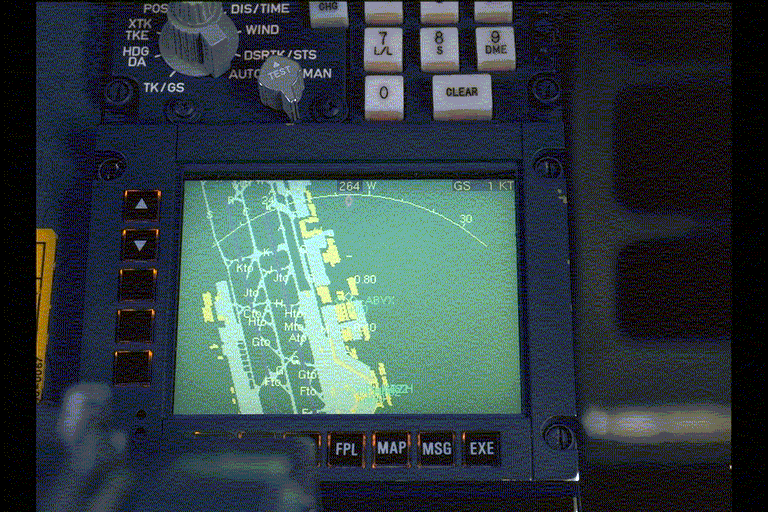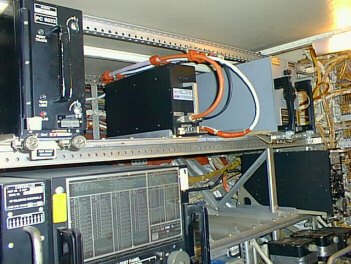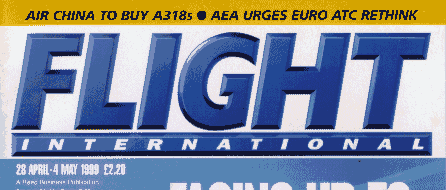
The following article has been reproduced with permission of the Editor of Flight International and converted to HTML format. Due to limitations in electronic reproductions the quality is lower then the original printing.
© 1999 Reed Business Information Ltd.

FLIGHT INTERNATIONAL 28 April - 4 May 1999
AIR NAVIGATION

Estimates of gridlock's onset vary from 20005-12, crippling airlines' ability of fly on schedule. Liffthansa is one of the airlines demonstrating the new technology
Link to the future
Europe's air traffic control datalink work is forging on
KIERAN DALY/COPENHAGEN AND STOCKHOLM
PROCESSING IN LOOSE line astern up the cast Swedish coast through the broken cloud of a winter Sunday morning, our four-strong formation is something of an oddity: a light twin turboprop flat out at 240kt (440km/h), tailed by a 196Os-vintage Russian airliner, followed by two examples of the world's first regional jet.
The members of this unlikely gathering 9km (5nm) apart, but bouncing with uncanny accuracy in each other's slipstreams - are involved not in some eccentric post-Glasnost air show, but in a demonstration of the cutting edge in air traffic control (ATC). Indeed, for the pilots of these aircraft, conventional ATC is, for a few minutes at least, superfluous. And, in tacit acknowledgement, the Stockholm controller is giving guidance only to the group’s leader.
The precise identities of the aircraft are, in formation order, a Raytheon Beech King Air 200 of the Swedish civil aviation authority, an Ilyushin Il-18 of Russia's Gosniias research institute and two Fokker F28s of Scandinavian trinational flag carrier Scandinavian Airlines (SAS). What unites them are the carriage of a pioneering piece of technology and their operators' understanding of what that technology can do for air transport.
For many observers on this demonstration flight, the basic technology and techniques on show are no longer new. This is automatic dependent surveillance-broadcast (ADS-B) the use of datalinking to transmit the positions of aircraft not just to ATC, but to each other, enabling more efficient use of airspace. SAS, Lufthansa, and the civil aviation authorities of Sweden, Germany and Denmark, however, are demonstrating the world's most advanced version of the technique under what is now called the North European ADS-B Network Update Programme (NUP). Most importantly, it now includes the capability of automatically resolving airborne conflicts - so-called trajectory negotiation.
Each of the four aircraft is equipped with a Swedish-developed global navigation satellite system (GNSS) "transponder", which receives global positioning system (GPS) navigation signals and differential correction information from dedicated ground stations, and then transmits the aircraft's position to similarly equipped aircraft and ATC. Crucially, it also transmits "intent" information derived from the aircraft's flight management system, laving the ground for trajectory negotiation.
HEADING OFF CONGESTION
The system has true gate-to-gate availability, working whether aircraft are airborne or on the ground. In NUP-related aircraft - primarily SAS F28s and six Lufthansa Boeing 747-200s but also others, such as the Russians' Il-18 and the Swedish CAAs King air – the information is provided to the crew on a specially developed cockpit display of traffic information. That display, which has completed 16,000 flight hours, can be magnified to provide highly detailed airport layout charts, complete with real-time traffic, or airborne displays, with a wealth of navigation and traffic information. The same VHF datalink used for ADS-B is also used for controller-pilot datalink communications, and as the link for differential GPS-guided approaches at Angleholm in Sweden.
During the four-ship demonstration, the system is put through a remarkable series of tricks, - all aimed unerringly at the real-life objectives of improving airspace capacity and safety.
In the second F28, we climb out of Copenhagen, watching the other aircraft ahead, en route to shoot a GPS-guided precision approach to notoriously challenging Angleholm. On the screen, we see a staged conflict with the King Air resolved, with red areas showing the conflict zone and grey areas indicating where not to go. Then we all track each other into Stockholm Arlanda at precise 9km intervals.
There is more. On approach to Angleholm, the runway on our display suddenly turns red as a GNSS transponder-equipped truck deliberately drives on to the strip ahead of us, illustrating how the system could finally spell the end of fatal runway collisions such as those at Tenerife, Los Angeles and Detroit. Taxiing at Copenhagen and Stockholm, we are presented with detailed displays of the airport, permitting safe navigation even in the poor visibility that routinely cripples Europe's air transport system.
For SAS, however, this is not a technological firework display, but an element of its effort to head off the onset of commercially life-threatening ATC congestion. SAS' mind has been concentrated by a particularly difficult winter that saw its normal challenges exacerbated by delays caused by the painful birth of Oslo's new Gardermoen Airport.
Capt Staffan Collin, SAS vice-president of flight operations, explains: "At Gardermoen, sometimes it is de-icing. Sometimes, it is ground movements. Sometimes it is lack of personnel. There is always an explanation, but the result is the same: the people go by another means of transport, like car or train or boat. You can go Copenhagen to Oslo by boat overnight in a nice cabin. Flying Stockholm to Copenhagen now takes 15min longer than it did - due to congestion."
Noting that estimates of the onset of gridlock vary from 2012 down to only 2005, Coulin continues: "It will then be more or less impossible to fly on a scheduled timetable. You will go to the airport and see if there is a flight and, if there is not, you will have to come back tomorrow. We have to do something, or we will end up everywhere with the situation that we have now in Gardermoen. Our customers will choose another transport aid."
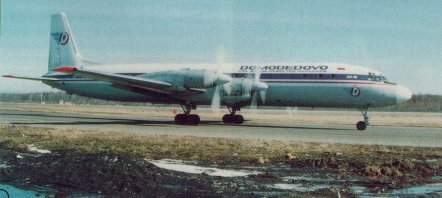
An Ilyushin Il-18, similar to the aircraft pictured, helped demonstrate the automatic dependent surveillance-broadcast system
SETTING STANDARDS
Capt Werner Knorr, Lufthansa vice-president for operations and chief technical pilot, has a similar message. "Today, in many parts of Europe, air traffic control and infrastructure are the limiting factors. Hubs and slots are among the most valuable resources. I assume that everybody agrees that the present capacity of ATC will be reached within 10 years or less."
Discussing the development of the underlying datalinking technology, Ulf Johnfors, SAS director of operational standards and development, says: "It was not a communications system; it was not a navigation system; it was not a surveillance system - it was all of those. I think that was the problem with people in the industry understanding what this was all about. People were used to working with one or the other. So it was necessary for us to offer some space on our aircraft to show what they could do."
Some understand that point only too well. For the existing communications, navigation and surveillance vendor community, ADS-B has the potential to shorten their current products lives - and none of them owns the Swedish technology. The result has been a running battle in technical standards setting forums world-wide between the supporters of Sweden's Self-Organising Time-Division Multiple Access an competing interests.
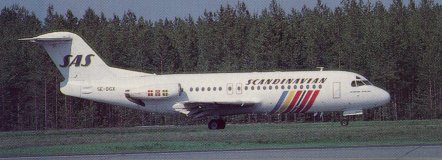
SAS is a key player in efforts to solve traffic management problems
The NUP team's work is concentrating more and more on homing in on the real-life applications that can yield the earliest payback, some of which are likely to be more prosaic than airborne ADS-B itself. Technical pilot Bengt Moberg runs through a lengthy list of possibilities, the first related as much to the use of differential GNSS (DGNSS) as to the datalinking. He says: "At Arlanda, we have three or four different time slots at the airport and we really don't know which one we are using. But every minute is valuable to us, so we need to know, and this system gives us the information."
Closely related to that is the concept of an airport surface movement guidance and control system as seen in the demonstration. Moberg says: "On the apron and taxiing, you get ground collision avoidance. On an aircraft today, you have almost no straight-ahead vision. But now you can see what is around the aircraft." Also with an eye to his airport management audience, Moberg says that the highly accurate navigation provided would enable high-performance monitoring of the tracks of aircraft that generate noise complaints on the ground.
A less obvious benefit, although SAS officials suspect that it may be an unexpectedly early outcome, is the concept of so-called "brake-to-exit". Moberg explains: "If you land at Brussels on a Monday morning and it is foggy, then once you land, you don't know where you are. You have to look for signs and that means reducing the [runway] capacity. You have to do things more slowly." What SAS wants is a way of linking the DGNSS data to the autobrake system so that the aircraft will brake at the optimum speed to take the controller's favoured exit, consequently keeping the airport traffic flow up. It is one possibility to be explored by the newest NUP informal partner, Airbus Industrie.
In the air, the key early possibilities are station-keeping and reduced separations. The former is primarily the use of ADS-B by pilots to maintain accurate in-trail separation from other aircraft, so maximising airport throughput. The latter is possible because current separations are as large as they are simply because of the inaccuracy of navigation and surveillance aids. Only on approach and departure do wake-vortex separation requirements emerge as a physical constraint. ADS-B boosts the accuracy of the airborne and ground aids, permitting statutory separations to be cut.
That airlines like SAS and Lufthansa are so deeply immersed in solving the problems of air traffic management is a measure of just how much the future of commercial air transport in Europe and the USA depends on solving them. This latest demonstration is a clear indication that they are on the right path.
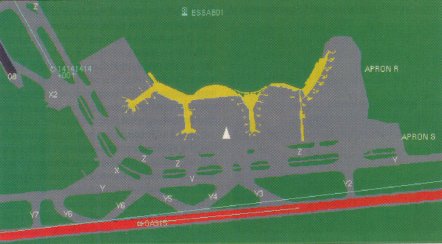
ADS-B can warn of runway incursions
Kieran Daly is editor of Flight International's sister 24h on-line service Air Transport Intelligence. See Flight International, issues 7-13 February, 1996, and 22-28 January, 1997, for earlier features on SAS' ADS-B.AIRBUS SIGNS ON
AIRBUS INDUSTRIE is the first air-framer to agree to participate in the European ADS-B activity.
The company is playing down the significance of its commitment, but its decision has delighted other participants who see the presence of one of the major two airframers, and preferably both, as crucial to promoting the technology and techniques developed in NUP. The decision is particularly significant because the managements of Boeing and Airbus, having seen disappointing returns from their investments in future air navigation system technology so far, are reluctant to authorise expenditure in any areas considered poor bets.
Peter Potocki, Airbus' director of air traffic systems, says: "We expect to be facing severe restrictions on the way airlines do business in the next few years unless we put in place the necessary tools.
"If our customers cannot fly, then it may restrict the rate at which they buy aircraft. This is why Airbus Industrie is very interested in air traffic management [ATM], and ADS-B may be one of the things that would help."
Potocki indicates that, as ever, Airbus is listening carefully to its customers. He says: "When we talk to our customers they think that the applications in the terminal area are perhaps going to be the most important thing in terms of how they do their business.
"They will say their biggest problems are delays. Not user fee, not poor routings - their biggest problem is the delays that disrupt hub-and-spoke operations."
Airbus' contribution, says Potocki, will be aimed at refining operational concepts, human machine interface issues, crew procedures, avionics displays and computing architecture.
Commenting on the VHF-based technology used by NEAN, he says: "Radio installation is an issue. We can only just prevent VHF interference between radios on the aircraft already."
He says Airbus has concerns about the consequences of the highly integrated architectures being used in advanced communications, navigation and surveillance (CNS) implementations, commenting: "if you combine the C and N and S then you reduce the sort of separation of function that the industry has historically relied on and so we have to be sure about safety." He adds, however,: "Our business is making aircraft for delivery to airlines. We have limited resources for other things and we have to work efficiently with them. I am glad we will be working with this."
Press clip as MS WORD dokument
Complementary pictures from SAS and the Civil Aviation Administrations showing the flight demonstration 21 February 1999.
Airborne Station keeping and Conflict Detection:
GOT 908 is the SCAA Flight Inspection a/c Beech 200. 14141414 is the Russian IL-18. SAS 6792 is one of the SAS F-28. White triangle is SAS 6790, the second F-28.
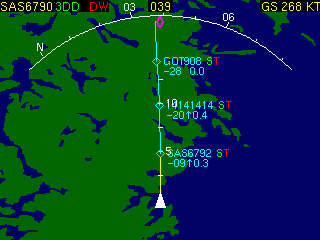
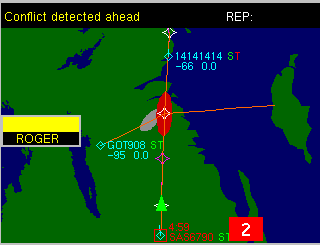
Demonstration flight 21 February 1999 – Runway Incursion and Pull-up:
(As seen from the SAS F-28)
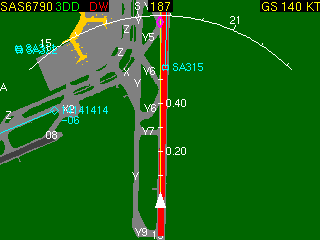
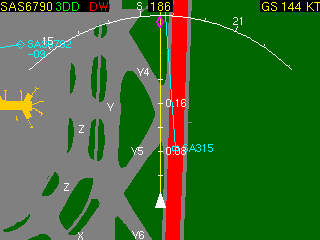
Example of Aircraft Installations:
